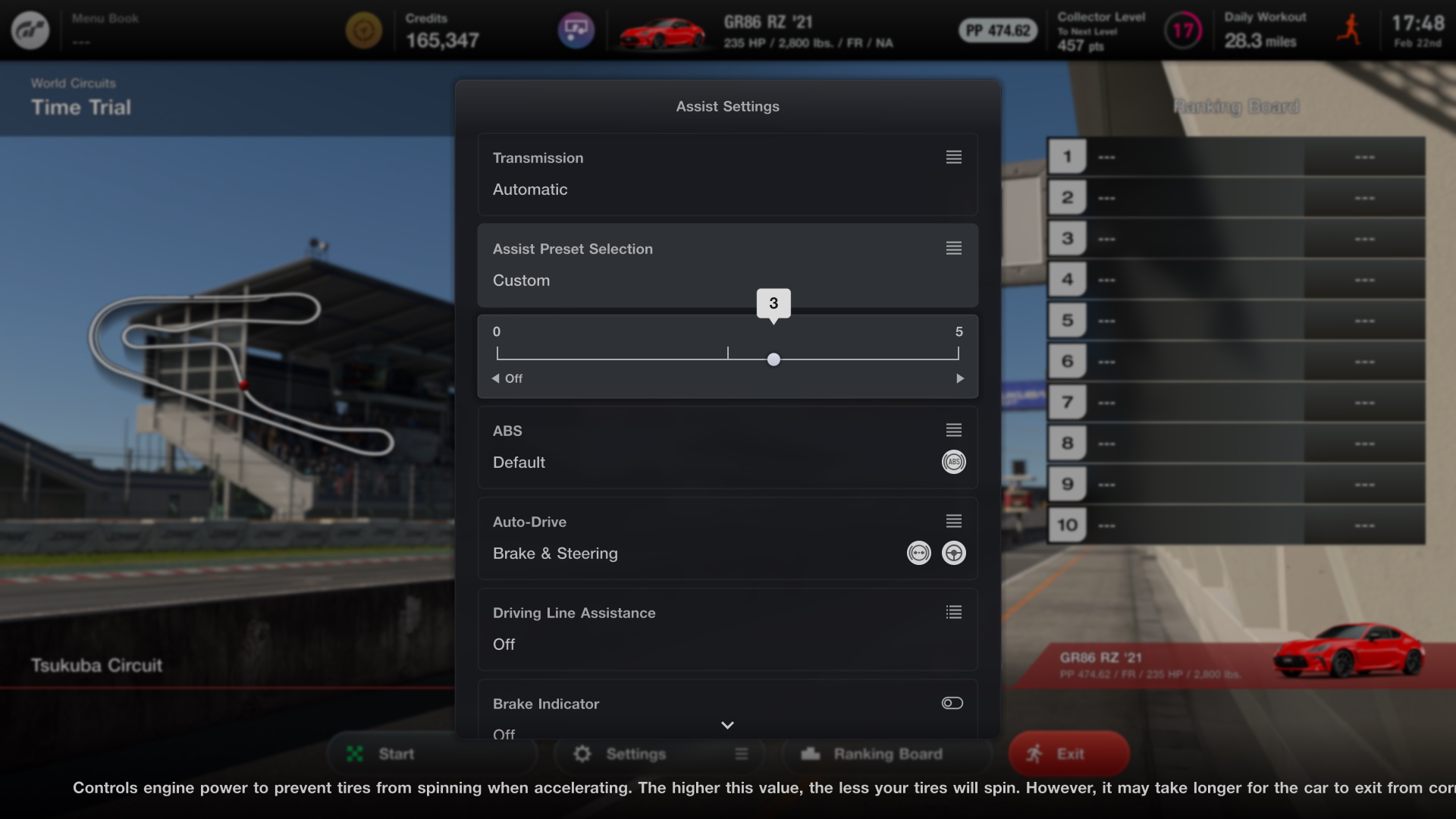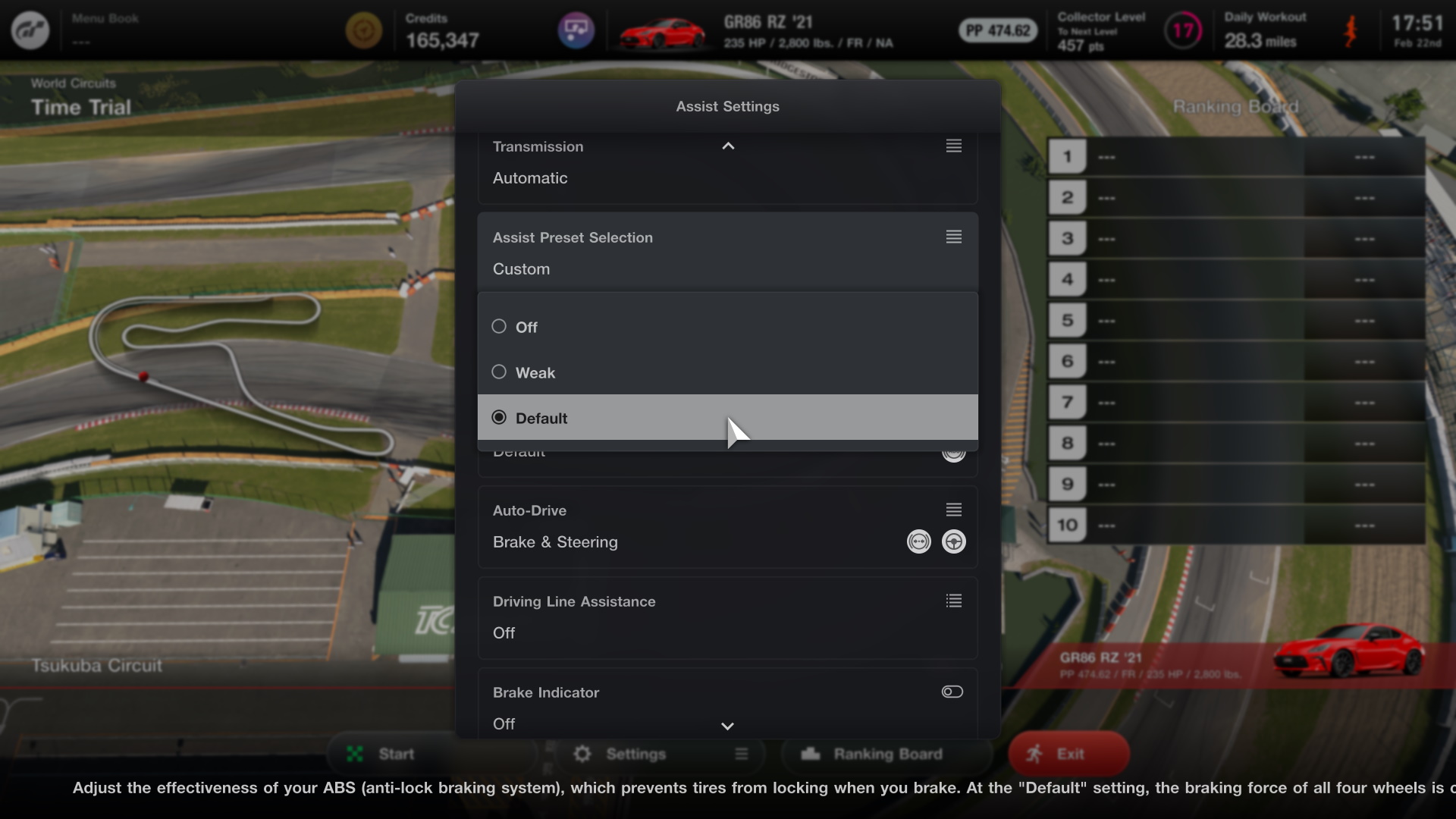Using Driver Assistance ② - Car Control
Advice for beginners 7
Protect against spinning out and going off-track
'Driver Assistance' also features functions that can be used to stabilize your car and protect against spinning out and other unintended actions. Let's take a look at some of these functions.
● Traction control system (TCS)
'Traction Control' monitors your tires to prevent spinning. For example, suddenly accelerating out of a corner with a powerful car will cause its wheels to spin, disturbing its balance. In such a case, 'Traction Control' will taper down engine power to prevent spinning.
However, it won't always work in your favor. It's important to remember that tire grip is strongest when there is a bit of slip between the tire and the road surface. Because 'Traction Control' works to prevent slipping, it can end up working too well, causing your tires to lock up.
In Gran Turismo 7 there are six grades of 'Traction Control' available. Beginners should start at '3' and adjust the value accordingly.

The TCS Settings Screen. Increasing the value will make the car more stable but will have a detrimental effect on its acceleration.
● Counter-steering assistance
When a rear-wheel vehicle enters a corner too fast, the back wheels can sometimes lose grip, resulting in a (sideways) slide (or a 'drift' when performed intentionally.) In order to control the extent to which their car slides, drivers may employ a technique called 'counter-steering', though there is also a 'Driver Assistance' function that does this automatically.
'Counter-steering assistance' controls your car's slide, making it harder to spin out. However, the act of sliding tends to waste time, so you should rather think of it as a safeguard for spinning out.

The Counter-Steering Assistance Screen. Counter-steering assistance will help stabilize your cars on corners.
● Anti-lock braking system (ABS)
ABS prevents your tires from locking up (i.e. from being dragged without spinning) when you make a hard brake, thereby extending your braking distance. The moment the system detects your tires locking up, it reduces the brake force to restore control to your vehicle.
All of the cars featured in Gran Turismo 7 are equipped with ABS, and offer three different settings: 'Off', 'Weak', and 'Default.' As brake control has a bit of a learning curve to it, beginners should start at the 'Default' setting.

The ABS Settings Screen. The moment the system detects your tires locking up, it reduces the brake force to restore control to your vehicle.
● Active stability management (ASM)
The phenomena of unintentionally veering outwards or inwards when cornering are known as understeering and oversteering. The ASM function is intended to control these characteristics with braking.
If your car is veering outwards due to understeering, ASM will apply a brake to the inside rear wheel, creating a force that pulls the car inwards, thereby offsetting the tendency. Conversely, if your car is veering inwards due to oversteering, AMS will apply a brake to the outside front wheel, creating a force that pushes the car outwards, thereby correcting your car.
Keep in mind that ASM is a part of the ABS, and will not function when your ABS is turned off.

The ASM Settings Screen. The system monitors for oversteering and understeering, ensuring that the car remains stable when cornering.
● Reset to track
This assistance function will return your car to the course if you happen to go off-track due to spinning out, driving in the wrong direction, or colliding with another car. Although resetting your car to the track will result in a loss of time, it will allow for a smoother experience.
Feeling more confident? I hope you've enjoyed my advice for beginners of Gran Turismo. Remember that even the world's best players were once beginners like yourselves. And so I look forward to seeing you all at the FIA Gran Turismo Championships one day. Happy racing!
